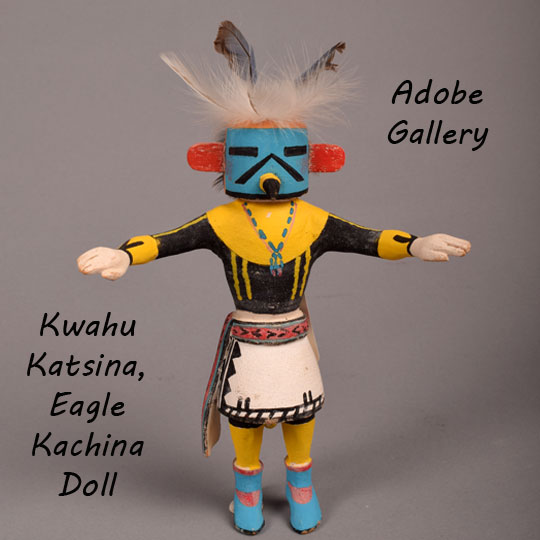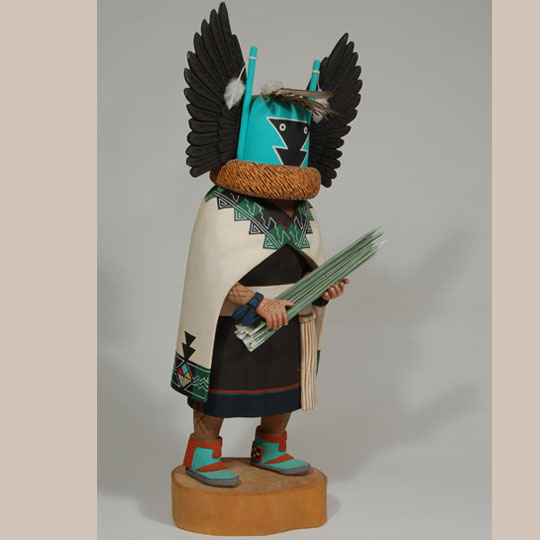Adobe Gallery Blog
What is a Katsina?
One question we are asked is, “What is a Katsina?” We would like to take the time to answer this question for those of you are new to the spirituality of the Pueblo people and may be unfamiliar with their Katsina cult.
This question arises as clients view our inventory of Katsina dolls, however this is only one of three ways Katsinas are expressed. They are also and originally the supernatural deities themselves, and the masked dancers who represent Katsinas at religious ceremonies.
The dolls are really teaching tools, and are carefully carved by the Pueblo men and gifted to young girls, two per year, until she is of marrying age. The boys are given bows and arrows but are included in sacred Katsina ceremonies in the kivas to inaugurate them into the spiritual cult.
Each Katsina has a different meaning and purpose. Chief Katsina teach wisdom, female Katsinas teach values, ogres teach discipline, and clowns provide amusement paired with lessons. Others provide advice, warnings, and blessings. Each Katsina is seen as a powerful being who is not worshipped but if given admiration and respect, will use its particular power for the good of the people.
According to the Katsina myths, the Katsinas themselves first taught the people how to hunt, heal sickness, make tools and how to live off the land by planting crops and collecting plants. At some point in history, wars occurred and the Katsinas were killed off. Or, according to another version of the mythology, the Katsinas returned to the underworld when the people began to take them for granted. Before they left or were killed, they taught a select few men of great faith their ceremonies complete with instructions on how to make the affiliated sacred masks and costumes.
The Katsinas are not with the people year round, they have a six month season that begins just after winter solstice. During this time the Katsinas (in the form of tribe members dressed in Katsina regalia) reside with the tribe and bring the people messages through participating in dances and ceremonies. Men portray both male and female spirits with the exception of only one Katsina—the Pachavuin Mana.
Each dance tells a story and serves multiple purposes. The regalia worn by the tribe member is not only designed to portray a specific Katsina, but also is believed to contain the spiritual essence of the actual Katsina.
These ceremonies are social occasions attended by friends and relatives of neighboring villages and consist of prayers and thanks for rain and health of the crops. Furthermore, these ceremonies are believed to maintain the harmony and balance between the Pueblo people and their spiritual Katsinas.
We can imagine a young girl, being administered to and ever watched by the careful and loving eye of my Katsina carvings, bestowed by the Katsinas themselves to me on very exciting occasions. There is a lot to learn and thus, a lot to share on the topic of Katsinas. Absorbing this information has helped to give me a stronger appreciation for the beauty that surrounds us every day at Adobe Gallery and, of course, an ever growing thirst to learn more about the mystical and magical world of Katsinum.
Source: Legends of America website
Note: there is no "ch" sound in the Hopi language. So, a closer pronunciation should be KATSINA (with a "T"). Therefore, you sometimes see both spellings—katsina, kachina.
TAGS: Kachina - Katsina Dolls, Zuni Kachina Dolls, Hopi Kachinas, Hopi Pueblo, Zuni Pueblo



